

Prancing Horse, Inc.
6100 Hoffman Road
HOFFMAN, NC 28347
Mailing Address:
P.O. Box 327
SOUTHERN PINES, NC 28388
Phone: 910-281-3223
MAKE AN INQUIRY
View our WEBSITE
EIN: 56-1479794Founded: 1984
View our PHOTO GALLERY
Profile Last Updated July 14, 2025Public Charity
Click here to view listing(s) of the program horses we are seeking
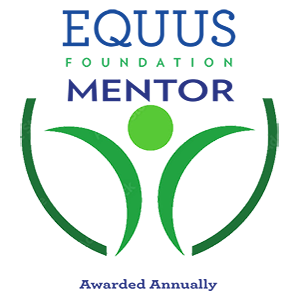
The Mentor Accreditation is awarded annually to an organization that operates at the highest standards for business and equine welfare practices in accordance with EQUUS Foundation guidelines for business and equine welfare practices outlined here.
We welcome you to donate directly to Prancing Horse, Inc.; Prancing Horse, Inc. will receive 100% of your donation made here. However, before making a donation, we encourage you to review this organization's Mentor information.
Last Updated: September 28, 2025

MISSION & PROGRAMS
Mission:The mission of Prancing Horse is to enhance the lives of individuals by providing a safe environment for therapeutic horsemanship.
Our organization conducts Equine Assisted Services in accordance with the EQUUS Foundation Guidelines on Qualifications of Organizations Conducting Equine Assisted Services (EAS).
Our organization provides outreach and/or public education programs involving horses.
100% of our total programs and services are equine-related.
Our organization is directly responsible for the care and shelter of equines involved in our programs.
Our organization does not CURRENTLY use satellite, overflow, foster, and/or outreach facilities.
Summary of organization's recent accomplishments, goals, strategies to achieve the goals, and capabilities to meet the goals, including its long-term plans to sustain its programs:
Since 1984, over 6,000 clients have benefitted physically and emotionally from building strong bonds with our therapy horses, gaining confidence, improved well-being, and enhanced physical ability. Our experienced, college-educated instructors—certified by PATH International—offer mainly weekly sessions using a dedicated herd of retired horses. Prancing Horse holds PATH’s highest certification: Premier.
In 2024, Prancing Horse Center for Therapeutic Horsemanship marked its 40th anniversary as a nonprofit (501c3) in Moore County, North Carolina's Sandhills. The milestone was celebrated with various events and a review of future goals.
We re-dedicated ourselves to serving individuals with disabilities and providing Equine Assisted Activities (EAA) to these individuals and their families. The activities that we provide as defined by the organization’s accrediting body, PATH, include riding, mounted or ground activities, grooming and stable management, horse shows, and demonstrations. We have two programs: Therapeutic Riding & Horsemanship and Freedom Reins, serving veterans.
A Bit Used is our retail store located in Vass, NC. Donors from the nearby horse communities donate gently used tack and clothing to our store and we resell the items. The proceeds are used to support our program’s operations.
This in addition to 2 major fund-raising events and an annual appeal fund the Prancing Horse program
Our program Directors carefully monitor our clients’ progress and for most, create and evaluate an individual development plan.
Goals:
1. Serve more clients each year,
2. Assess individual participant goals through equine assisted therapy,
3. Increase the number of individuals served per session, regardless of ability to pay,
4. Move clients from the waitlist to active status,
5. Achieve a balanced year-end budget.
Evaluation Procedures
Programmatic goals are evaluated monthly by tracking the number of clients served, waitlist movement, individual goal progress, income, scholarships, and program expenses. Success is defined as serving the most clients possible while maintaining quality, safety (without incidents), and a supportive environment that encourages client return.
In 2024, Prancing Horse expanded its horsemanship program by adding ground lessons for all students. The Therapeutic Riding & Horsemanship program provided Equine Assisted Activities for people with disabilities, improving strength, balance, and fostering emotional, social, and educational growth. Riders learn horse care and participate in lessons including reading, colors, and numbers. With support from over 60 volunteers, Prancing Horse serves Moore County and nearby areas, welcoming everyone regardless of their ability to pay.
In 2024, The Freedom Reins program expanded through a partnership between Operation Red Wing and Prancing Horse. Every other Thursday, 6–10 veterans participated in 2-hour ground lessons, choosing their own horse, practicing leading and grooming, navigating obstacle courses, and doing liberty work in the round pen.
As a Premier Accredited PATH member, Prancing Horse also partners with the Wounded Warrior Project to provide free therapeutic horsemanship for active duty and retired service members. The Freedom Reins program benefits veterans, their families, the community, and volunteers through impactful experiences. Prancing Horse also serves Fort Bragg, supporting its large military population. Sessions involve guiding horses along an obstacle-filled Trust Trail and working with instructors in a round pen to build trust between clients and horses.
2024-2026 Strategic Plan, FINAL October 26, 2023; with 2024 Accomplishments
1) Have a sufficient infrastructure and farm equipment for daily functionality and sustainability.
• Utilize consultant services when needed for assessments and installations. ONGOING; contract work utilized for bookkeeping and marketing.
• Invest in needed technology.
o Assess and plan for usable technology that synchs with other software programs. can manage donor data, mailings, charges, etc. Ongoing utilizing Bloomerang and Constant Contact. Used QGiv for Annual Barn Dance.
o Invest in high-speed internet technology. Unavailable at this time.
o Replace as needed computers, printers, and other hardware. Not needed yet.
o Invest in methodologies for document security, storage, and sharing Utilizing shared drives for documents and fund development.
• Provide a safe environment.
o Assess the status of existing safety issues, security systems (ADT), fire and disaster plans, water, gas, and oil supplies. DONE
o Plan for capital replacements as needed considering budget cycles. ONGOING
o Replace or repair essential and outdated farm equipment. DONE Replaced or repaired old equipment.
o Ensure ground surfaces in round pen and arenas have ample footing and drainage. OnGoing: replaced external fencing; improved drainage at gate areas.
2) Build up a cadre of engaged individuals who demonstrate our mission and vision.
• Develop effective methods to show that we care for our staff, volunteers, and donors.
o Plan recognition events and processes ONGOING luncheons, dinners out, and annual meetings. Awards given at Annual Meeting. Staff received annual review, bonuses, and raise. Horse Farm Tour owners were provided with recognition and gift; local news paper write ups. Pinehurst Community Foundation grant award was written up in the Pilot.
o Hold fun-events to engage families and friends. As Above.
o Develop staff through opportunities to show their talents, contribute in new ways, and have greater visibility. OnGOING by providing stretch assignments to staff such as involvement with fundraisers and PATH record-keeping for recertification. Staff attended annual PATH conference paid by Prancing Horse. Jordan received special award.
3) Achieve financial security and solid community brand recognition.
• Utilize the 40th Anniversary as a launch point for committee goals and media blitz. DONE
• Invest in social media and website design.ONGOING usage of Facebook and website.
• Re-invent and build a dynamic and effective fund development committee. ONGOING; six members in place and involved with fundraising.
To achieve our goals the Long Range Strategic Planning Committee revised their goals.
ACKNOWLEDGEMENTS: The Long Range Strategic Planning Committee acknowledges that there have been significant examples of progress in meeting the 2024-2026 Stategic Plan goals. The addition of the AED equipment is just one outstanding example. However, the LRSP team believes that there are additional opportunites for the consideration by the Board of Directors
In light of the addition of a new Executive Director for Prancing Horse, the Long Range Strategic Planning Committee suggests the following Addendums to the 2024-2026 Strategic Plan.
SUGGESTED ADDENDUMS TO THE 2024-2026 STRATEGIC PLAN (As of November, 2024)
I. Goal Statement: Increase Community Awareness and Community Involvement
Objectives
• Create a team of speakers for presentations to clubs, organizations, and schools
• Prepare team for presentations
• Consider taking PH animals (i.e. donkey, goat, small horse) to presentations
• Invite parents to school presentations if approved by principals and teachers involved
• Identify and solve any safety and/or insurance issues
II Goal Statement: Maintain Premier Status with PATH and Program Stability
Objectives
• Focus on planning for farm expenses and salaries for staff
• Ensure safety
• Ensure financial stability
• Create new opportunities to involve donors
• Increase efforts to support/recognize staff and volunteers
III Goal Statement: Reevaluate Prancing Horse Committee Structure
Objectives
• Consider adding an Event Planning Committee
• Consider adding the Chairman of LRSP Committee to the Board of Directors
o Note: This person should be fully informed.
IV Goal Statement: Improve Volunteer Recruitment & Retention Strategies
Objectives
• Develop relationships with high schools, colleges, and home school groups
• Update volunteer orientation and training
• Provide thorough training and understanding of disabilities
• Offer continued education for volunteers
• Institute Volunteer of the Month to demonstrate appreciation and recognition
Please describe what steps your organization takes to ensure that:
1) all interactions between your equines and people are mutually beneficial and conducted in accordance with the Guidelines for Human-Equine Interactions stated below;
2) all equines in the care of our organization and/or equines that participate in the organization's program have access to clean drinking water at all times; nutritious food in sufficient quantity, including natural forage such as pasture grass and/or hay; appropriate veterinary, farrier, and dental care; shelter and protection from the weather; sufficient safe space to move around comfortably on a daily basis; and daily opportunity to freely interact and have contact with other equines:
Our herd
Our current equine herd is made up of twelve hard-working therapy horses. All are in their second career as equine healers. Our horses are essentially athletes that receive clean water, a good diet of feed and hay as well as supplements, hoof care, regular veterinarian and dental care, regular exercise, and healthy paddocks with run-in sheds. They require good fitting tack and riding equipment. And they need time off to recover from carrying clients in a sand arena.
Horses are used in compliance with the PATH international standards; weight limits are set for each equine; no horse is used for more than 6-hours in a workweek. Our horses are scheduled on a rotating basis and used an average of twice daily in a mounted lesson of 30 – 45 minutes or up to 2-hours in an unmounted lesson. Several of our horses are older, it is not our desire or expectation to use them in a manner that is inconsistent with their abilities or physical condition.
Prancing Horse takes the following steps to ensure that the equines benefit from human interactions
1. Horses are limited to 1 or 2 non-consecutive work hours each day.
2. Each horse has its own carefully fitted tack
3. Equines have regular veterinarian, dental and farrier appointments.
4. New horses are quarantined to protect the herd
5. All pastures, fencing, run-ins and barns are inspected regularly for safety
6. Equines are exercised each week by staff
7. We provide massages, chiropractic care and, on occasion, acupuncture
8. Fields maintained/fertilized/treated regularly
9. Potable water provided in each field and in the stalls
10. Stalls 12 x 12 – Horses only brought in when working
11. Pastures 1 – 3 acres each with a run-in shed
12. Manure picked 3-times weekly and composted
13. Feed and supplements stored in a rodent free temperature controlled environment
14. Diets are personalized for each equine
15. Dental at least once per year
16. Farrier appointment every 4 - 6 weeks
17. Other therapies: PEMF and acupuncture as needed
18. Each equine is assessed by the farm manager and a PATH certified individual before entering the program and through out their time at Prancing Horse. Records are kept in Sales Force.
The horses are out in the 1-3 acre paddocks at all times when not being used in lessons. They are in small 'herds' of 2 - 4 equines with the ability to see other herds over the fences. They are loved by staff, volunteers and their students. We have not returned any horses in 2024 who were soured by being in the program.
Equine Assisted Services (EAS):
Our organization provides the following Equine Assisted Services (EAS):
Therapeutic/Adaptive Riding
Therapeutic/Adaptive Unmounted Horsemanship
3: Total number of Equine Assisted Service Providers at Prancing Horse Farm
1 Allison Wixson
FACILITY PARTICIPATION:
Prancing Horse Farm
RELATIONSHIP: Employee
SERVICES PROVIDED:
Therapeutic/Adaptive Riding
Therapeutic/Adaptive Unmounted Horsemanship
DEGREES, LICENSES AND/OR CERTIFICATIONS
Prancing Horse is a Premier accredited member of PATH International and all of our instructors are PATH certified. Allison's PATH certification - #8000307.
2 Judy Lewis
FACILITY PARTICIPATION:
Prancing Horse Farm
RELATIONSHIP: Volunteer
SERVICES PROVIDED:
Therapeutic/Adaptive Riding
Therapeutic/Adaptive Unmounted Horsemanship
DEGREES, LICENSES AND/OR CERTIFICATIONS
Prancing Horse is a Premier accredited member of PATH International and all of our instructors are PATH certified. Judy's PATH certification - #79854.
3 Susan Price
FACILITY PARTICIPATION:
Prancing Horse Farm
RELATIONSHIP: Employee
SERVICES PROVIDED:
Therapeutic/Adaptive Riding
Therapeutic/Adaptive Unmounted Horsemanship
DEGREES, LICENSES AND/OR CERTIFICATIONS
Prancing Horse is a Premier accredited member of PATH International and all of our instructors are PATH certified. Susan's PATH certification - #69339.
Overview of our programs involved with providing EAS to individuals with special needs:
Our primary goal is to enhance the lives of individuals with disability by providing a safe environment for therapeutic horsemanship. We provide adaptive riding and ground lessons to people with physical, emotional, or cognitive disabilities. We accept clients as young as four with no upper age limit. They are from all ethnic and cultural backgrounds and economic levels.
Our Therapeutic Riding (TR) programs serves individuals with disability types including Autism, Rett Syndrome, Down Syndrome, Risk of Paralysis, ADHD, Social-Emotional (Anxiety, Depression). We serve Moore County residents, as well as those from 5 surrounding counties and Fort Brag military instillation.
Our therapeutic horsemanship (TR) program has served individuals with disabilities, ages 4 to 70+, since 1984. Recently, more parents, grandparents, and veterans have joined as volunteers, assisting in various roles. Working with horses has been transformative for both riders and volunteers, many of whom were new to horses.
We have modified our weekly classes for the well-being of our horses: operating four days a week, with each horse working once or twice a day but never consecutively; lessons run from 30 to 45 minutes at a walk. We adhere to PATH accreditation standards, assigning weight and usage limits to each horse. Veteran sessions are unmounted. Horses take seasonal breaks from mid-December to mid-February, mid-May to September, plus Thanksgiving, Easter, and other closures. All horses are barefoot, kept outdoors, exercised two to three times per week, and only brought in for work. Our unpaid live-in caretaker, with over 40 years’ experience, performs night and weekend checks.
Outreach and/or Public Education:
A key to the success of our program is directly tied to the relationships we have built in the community. Many learn of our programs by word of mouth.
Our 30 acre farm is in close proximity to Fort Bragg, the largest military installation in the United States. Many of our TR participants are dependents of parents with a military affiliation. A growing percentage are dependents of veterans as active duty parents seek separation from service.
In addition to our therapeutic riding (TR) students, we have increased our client base of active and retired military personnel especially the Freedom Reins (FR) program for veterans. Through partnerships with Operation Red Wings (ORW) and Wounded Warrior Project (WWP), we had a record year serving veterans. However, ORW closed its local facility in late 2024, leading to a temporary decrease in veteran participation. Other organizations have since started filling the time slots.
Freedom Reins is a ground-based program where veterans learn natural horsemanship basics, from haltering and leading to grooming techniques and liberty work. The bond between horse and human is unique and rewarding for all involved. Most ORW veterans came from across the U.S., while local participants often come via WWP. Sessions last two hours and are facilitated by volunteers and staff, including Susan Price, our Director for Veteran Services with 20 years' experience and expertise in Monty Roberts’ techniques.
Research/Medical Use of Equines:
Our organization has never made, and would not ever consider making, equines available for research studies or medical training that involves invasive procedures and/or that which may cause pain or suffering to the equine.
Religious Affiliation:
Our organization does not promote religious education, religious purposes, or a specific religious faith or use donations for religious education or religious purposes; require participants to be of a certain faith; require participation in religious, instruction, activities or services; or require participation in prayer, worship, religious instruction or other religious activities as a condition of receiving social or secular services offered.
Auction Donation:
Our organization has never allowed, or would not consider allowing, an equine to be sold, transferred, released, or otherwise placed into possession of any person or organization that would cause or allow the equine to be sold at auction for slaughter.
POLICIES: INTAKE, ASSESSMENT & TRAINING
Prior to a horse being accepted and/or arriving at the facility, the organization has the following policies in place:The owner of a potential equine is interviewed over the phone or in person prior to seeing the equine
The equine is evaluated at its place of residence
The owner completes an application/contract which constitutes the agreement between the owner and our organization when the equine is acquired from the equine's owner other than by seizure or by abandonment
The owner is financially responsible for the shipping of the equine to and from the organization
If health records are not available or are out-of-date, our veterinarian will administer appropriate vaccinations
A health certificate signed by a veterinarian and dated no more than seven days prior to arrival is provided to our organization either prior to or upon arrival of the equine attesting to the health status of the equine
Trial Period: Check all that apply:
Equines are on trial for 60 or more days
The trial period may be reduced based on the equine's progress
During the trial period, the organization accepts financial responsibility for the care of the equine, including board, feed, shoeing and any necessary veterinary care, up to a fixed amount agreed upon by the organization and the owner
The trial period may be terminated by either the organization or the owner for any reason
Equines are on trial for up to 30 days
Equines are on trial up to 60 days
During the trial period, the organization accepts total financial responsibility for the care of the equine, including board, feed, shoeing and any necessary veterinary care
During the trial period, the owner/donor is financially responsible for the care of the equine, including board, feed, shoeing and any necessary veterinary care
Upon intake, the organization has the following quarantine policy in place:
The equine is confined to a designated and separate area for isolation and quarantine at the facility for a prescribed period of time
The equine is confined to a designated and separate area for isolation and quarantine off-site for a prescribed period of time
The equine is not quarantined
The typical length of quarantine is: 20 to 30 days
Following arrival of the equine at the facility, the following is performed:
Physical examination to include temperature, pulse and respiration by a veterinarian upon arrival
Physical examination to include temperature, pulse and respiration by a trained staff member upon arrival
A Henneke Body Conditioning Score or other body conditioning score is assigned by a veterinarian upon arrival
Photographs are taken of each equine upon arrival at the facility and kept with the equine's health records
Physical examination by a farrier
Physical examination by a dentist
A Henneke Body Conditioning Score or other body conditioning score is assigned by a trained staff member upon arrival
The equine is microchipped if the equine has not been microchipped
Horses are assessed for following skills and behaviors:
Retrieval from a pasture/paddock
Leading with a halter and lead rope
Temperament, disposition and attitude, such as rated from very calm to very high spirited
Saddling
Bridling
Lunging
Loading onto and unloading off a trailer
Mounting and dismounting
Riding at the walk
Riding at the trot
Riding at the canter
Riding by a beginner and/or unbalanced rider
Tolerance to unusual objects and loud noises
Known vices, i.e., cribbing, biting, kicking, weaving, stall walking, etc
Grooming
Bathing
Clipping
Tolerance to multiple handlers at the same time
Jumping
Driving (Pulling a carriage)
Our organization has the following policies and procedures in place pertaining to the ongoing assessment of horses in its care:
Physical examination by a veterinarian at least annually
The Henneke Body Condition score or other body conditioning score is updated at least annually by the veterinarian
Vaccinations are administered at least annually
Equines at our facility may be treated by an equine chiropractor
Equines at our facility may be treated by an equine acupuncturist
Equines at our facility may be treated by an equine massage therapist
Equines at our facility may be treated by an equine nutritionist
The Henneke Body Condition score or other body conditioning score is updated at least annually by a trained staff member
Photographs are taken of each equine monthly and kept with the equine's health records
Photographs are taken of each equine annually and kept with the equine's health records
Our organization has the following policies and procedures in place pertaining to the weight-carrying or workload capabilities of horses/equines that are ridden in our care:
Our organization evaluates the weight-carrying and workload limitations for each equine that is ridden at least annually
Our organization maintains a written record of the weight-carrying and workload limitations for each equine that is ridden
Our organization does not evaluate the weight-carrying and workload limitations for each equine that is ridden
No equines are ridden; not applicable
The following variables are considered in determining the weight-carrying and workload limitations for each equine that is ridden:
Equine age, weight, breed, body condition, fitness, balance, health and soundness
Equine conformation to include the top line, length of back, strength and width of loin, bone density (measured by the circumference of the cannon bone just below the knee)
Size, shape, condition and angle of the hooves
Participant weight, height, body proportions, balance, fitness and riding skills as well as behavioral issues and safety concerns
Weight and proper fit of the saddle and other equipment
Terrain and footing in the working environment
Duration and frequency of working sessions, as the frequency with which an equine is subjected to maximum weight carrying and/or workload
Nature and pace of work, repetitive or varied, radius of turns, degree of incline and regularity of footing when equine is subject to maximum weight-carrying capacity
Temperature and/or weather conditions
Seasonal impact on the equines' workload and weight-carrying capabilities and limitations
Our organization does not evaluate the weight-carrying and workload limitations for each equine that is ridden
No equines are ridden; not applicable
Horses provided formal training (groundwork or riding): 2-3 times per week
POLICIES: BREEDING
The organization has the following policies related to breeding and stallions:Our organization does not conduct breeding of equines owned or under the care of our organization.
Our main facility where our organization conducts its programs does NOT breed equines.
One or more of the facilities where our organization conducts its programs, including foster/temporary care facilities, breeds equines
One or more of the facilities where our organization conducts its programs, including foster/temporary care facilities, are permitted to house stallions
POLICIES: EUTHANASIA
The organization has the following policies related to euthanasia:Our organization will never have an equine euthanized for space
Our organization will have an equine euthanized upon the recommendation of the veterinarian if the equine is a threat to itself, other equines, or people
Our organization will have an equine euthanized upon the recommendation of the veterinarian after all reasonable treatment options have been explored
Euthanasia is done on site when possible to decrease trauma from transport
Disposal of the carcass is handled within 24 hours
Our organization will never have an equine euthanized under any circumstances
Euthanasia is done at the veterinarian's facility
The following are authorized to administer the procedure for your organization in accordance with state laws:
Veterinarian
A certified euthanasia technician
Senior staff with appropriate training
Employee of animal control shelter or humane society with appropriate training
Veterinary student under the supervision of a licensed veterinarian
Not applicable. Our organization prohibits euthanasia under any circumstances
Additional information about our euthanasia policies and practices:
When it is determined by the Farm Manager and Executive Director that any leased equine can no longer perform as a therapeutic riding horse, the owner is notified and the horse is returned to its owner. If the horse is owned by the center, a suitable retirement home will be found for the equine. If the horse is unable to go to a retirement home due to extensive medical issues, euthanasia will be considered.
A horse will only be euthanized by the center if the equine has little to no quality of life or health issues that prohibit its recovery. Owners who lease their equines to Prancing Horse may elect to euthanize their animal at our farm should it have lethal health issues.
POLICIES: RE-HOMING
View Re-homing AgreementOur organization has the following re-homing (adoption/purchase) policies and procedures in place:
All potential adopters/purchasers complete a written contract which constitutes the agreement between our organization and the new owner
Our organization does NOT re-home an equine to first time equine owners
Potential adopters/purchasers must visit our organization and be observed with the equine on site
Our organization conducts a site visit of the adopter/purchaser's facility before the transfer of the equine to the adopter/purchaser's facility
Potential adopters/purchasers are encouraged to do a short-term, on-site foster with the equine
Our organization will only re-home an equine to a location where another equine resides
The distance of a potential adopter/purchaser's home from our facility is a consideration for when re-homing an equine
Adopters/purchasers are NOT required to provide updates
Our organization has the following policies and procedures related to horses that need to be retired, are no longer able to contribute to the mission of the organization, and/or are no longer manageable:
Equines may be found suitable homes by our organization
Equines may be returned to their owners
In the case an equine is unmanageable and demonstrates repeated dangerous behaviors, the equine may be euthanized upon the recommendation of the veterinarian
In the case an equine is unsound and/or unhealthy and cannot be treated to relieve suffering, the equine may be euthanized upon the recommendation of the veterinarian
The organization will accept financial responsibility for equines in the current care of the organization that need to be retired or are no longer able to contribute to the mission of the organization if all alternatives have been explored to find the equine an appropriate placement and space is not available for the equine to remain at the organization.
Equines may remain at our organization for their lifetimes
Equines may be sent to auction
If a suitable home cannot be located within 12 months, the equine may be euthanized
The uploaded Re-homing agreement includes the following re-homing (adoption/purchase) statements:
The agreement reflects that any individual or organization in possession of the equine as of the date of the agreement and any time thereafter is bound to not sell the equine at auction for slaughter or allow the equine to be sold, transferred, released, or otherwise placed into possession of any person or organization that will cause or allow the equine to be sold at auction for slaughter.
The agreement states that should the adopter decide to re-home the equine, our organization must grant approval of any individual or organization intending to take possession of the equine for any reason prior to the equine being placed into the possession of such individual or organization, including being provided written notification of the name, address, and telephone number of any individual or organization intending to take possession of the equine for any reason.
The agreement states that the terms of our organization's agreement will be binding on any future individual or organization taking and/or in possession of the equine for any reason.
The agreement states that re-homed equines cannot be bred
The agreement states that if there is any breach of contract the equine must be returned to our organization
The agreement states that our organization reserves the right to make scheduled visits
The agreement states that adopters/purchasers can return an equine to our organization for a fee
The agreement states that the re-homed equine CANNOT be sold, adopted, transferred, auctioned, released, given away, or otherwise placed into the possession of another individual or organization under any circumstances and must be returned to our organization should the adopter decide that he/she is no longer able, or no longer wishes, to care for the equine.
The agreement states that should the adopter decide to re-home the equine, the adopter must grant the organization first right of refusal prior to the equine being placed into the possession of any individual or organization intending to take possession of the equine for any reason.
The agreement states that should the adopter decide to re-home the equine, our organization must be notified of the name, address, and telephone number of any individual or organization intending to take possession of the equine for any reason prior to the equine being placed into the possession of such individual or organization.
The agreement states that our organization reserves the right to make unannounced visits
The agreement states that adopters/purchasers can return an equine to our organization free of charge
The agreement states that adopters/purchasers are required to provide updates (photos, vet records) for one year
The agreement states that adopters/purchasers are required to provide updates (photos, vet records) for two years
Our organization microchips all equines that are not already microchipped before the adoption and/or transfer of the equine if the organization has the authority to microchip the equine.
The agreement includes the microchip number of the equine.
The agreement states that adopters/purchasers are required to provide updates (photos, vet records) for as long as the adopter/purchaser is responsible for the care of the equine
None of the statements are included.
The organization does not re-home equines under any circumstances; our organization retains custody of our equines and ensures care of the equines for their lifetimes.
Our organization does not have the authority to transfer ownership and/or does not own any of the equines involved with our programs.
Our organization requires references from the following:
Personal/Other
Veterinarian
Farrier
Not applicable or no references required.
Transfer of ownership occurs: Immediately (at the time of adoption/purchase) or less than one year
The average equine re-homing (adoption/purchase) fee received by your organization:
Not applicable; None received
Additional information about our rehoming policies and practices:
With the exception of two equines that we own, all of our horses are free leased from their owners. If/when the horse becomes unsuitable for our program, it is returned to the owner. If the owner refuses to take the horse back (this has never happened yet), our re-homing policy will go into effect. The re-homing agreement is binding on all future adopters of the equine.
EQUINE CARE & SHELTER/FACILITY INFORMATION
Our organization does not CURRENTLY use satellite, overflow, foster, and/or outreach facilities.Total facilities at which our organization cares for and shelters horses used in our programs: 1
Prancing Horse Farm
6100 Hoffman Road Hoffman NC 28347
Currently operational
Total number of horses/equines currently involved with your programs, under your care, and/or owned by your organization at this facility: 11
Total number of horses at this facility NOT INCLUDING those counted above: 0
Maximum capacity of horses at this facility: 15
Does your organization own, lease or use a part of this facility? Own
Provide the contact information for the individual or organization responsible for investigating abuse in the county where the facility is located, including mailing address, email address, and phone information.
Animal Control Center of Moore County 5235 Highway 15/501 Carthage, NC 28327 (910) 947-2858 bsears@moorecountync.gov
Does your organization conduct Equine Assisted Services (EAS) at this facility in accordance with the EQUUS Foundation Guidelines on Qualifications of Organizations Conducting Equine Assisted Services (EAS)? Yes
Total number of Equine Assisted Service Providers AT THIS FACILITY, including instructors, specialists, therapists, counselors, coaches and/or facilitators (full-time, part-time, volunteer, independent contractors, and/or providers accompanying clients) that conduct Equine Assisted Services (EAS) in accordance with the EQUUS Foundation Guidelines on Qualifications of Organizations Conducting Equine Assisted Services (EAS) AT THIS FACILITY: 3
Equine Assisted Service Providers Assigned to this Facility: (see Equine Assisted Service Provider Section below for details)
1. Allison Wixson
2. Judy Lewis
3. Susan Price
Grounds: Prancing Horse Farm (*Main) Currently operational This section is required.
Total acreage dedicated specifically to the horses: 16
Our organization has use of the following at this facility:
Structures/Barns: 1 Run-in sheds: 7
Pastures: 8 Paddocks/Pens/Turnout Areas: 0
Uncovered Outdoor Rings: 1 Covered Outdoor Rings: 1 Indoor Rings: 0
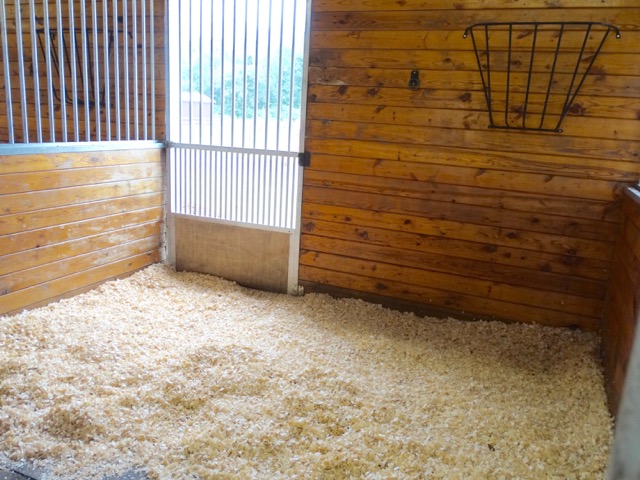
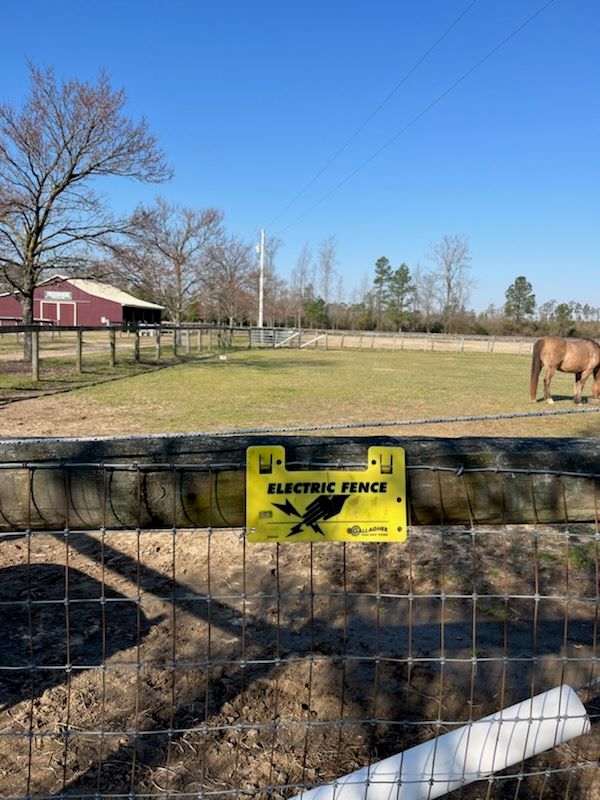
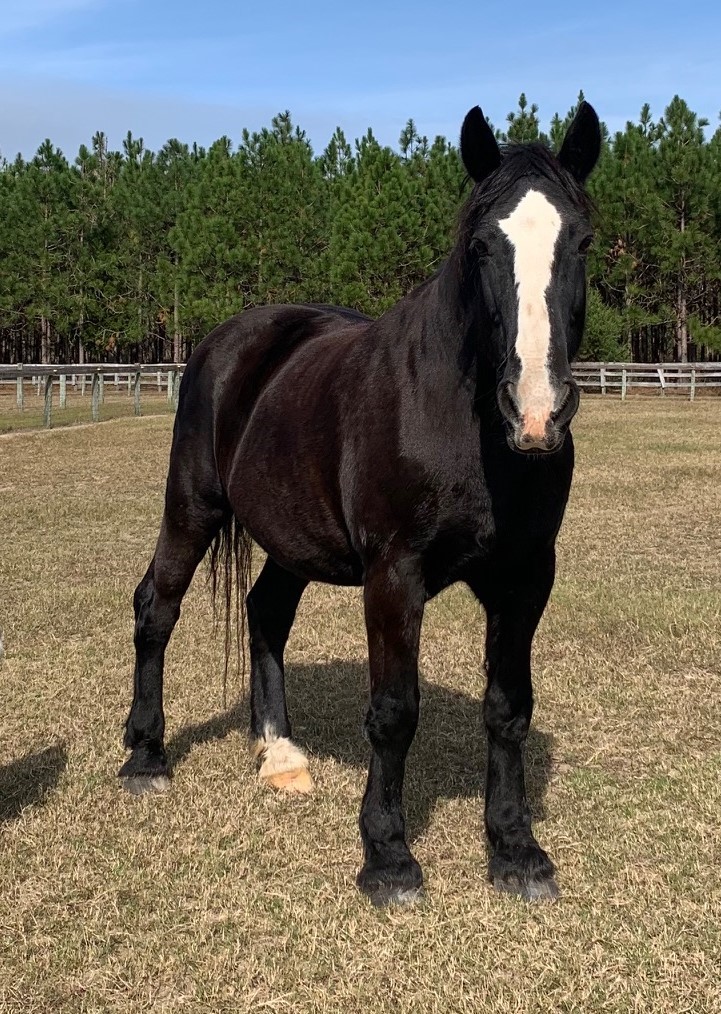
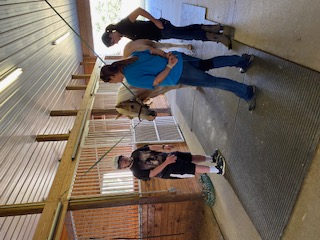
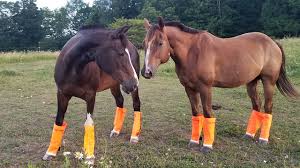
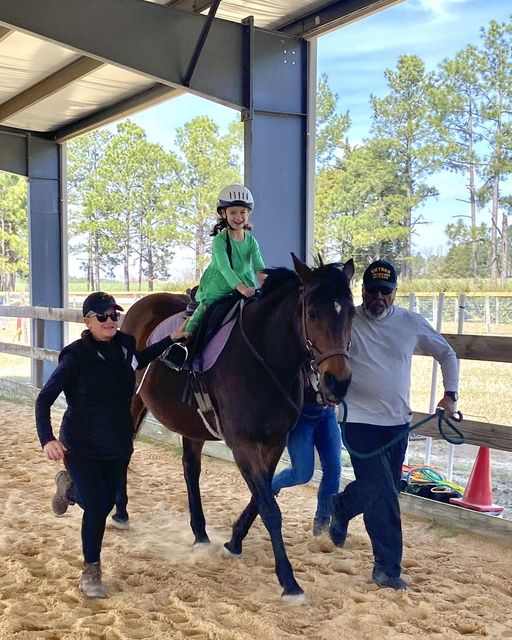
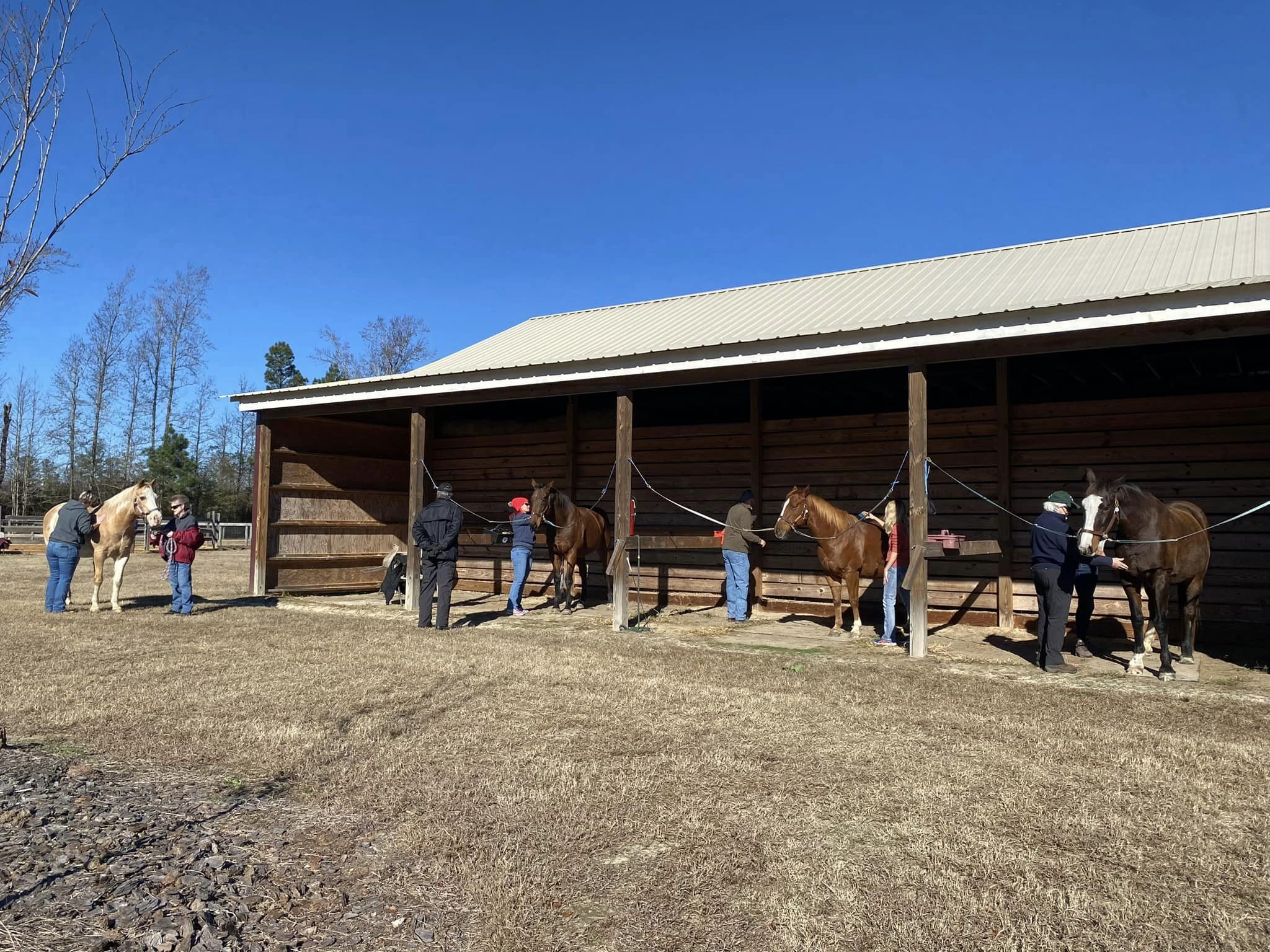
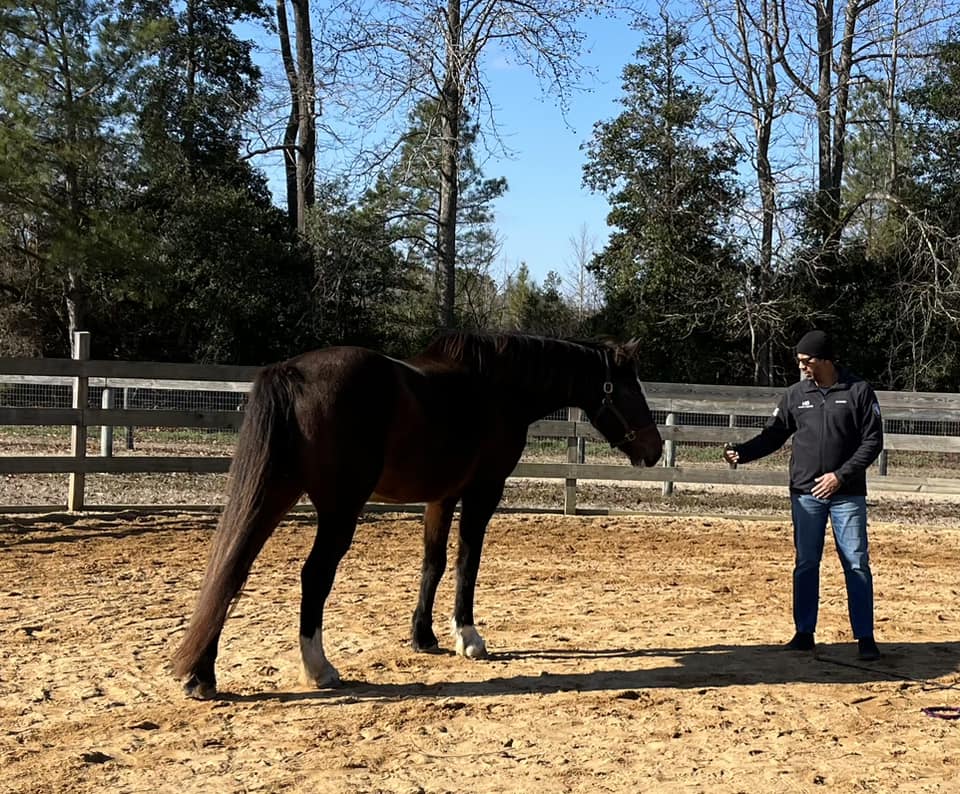
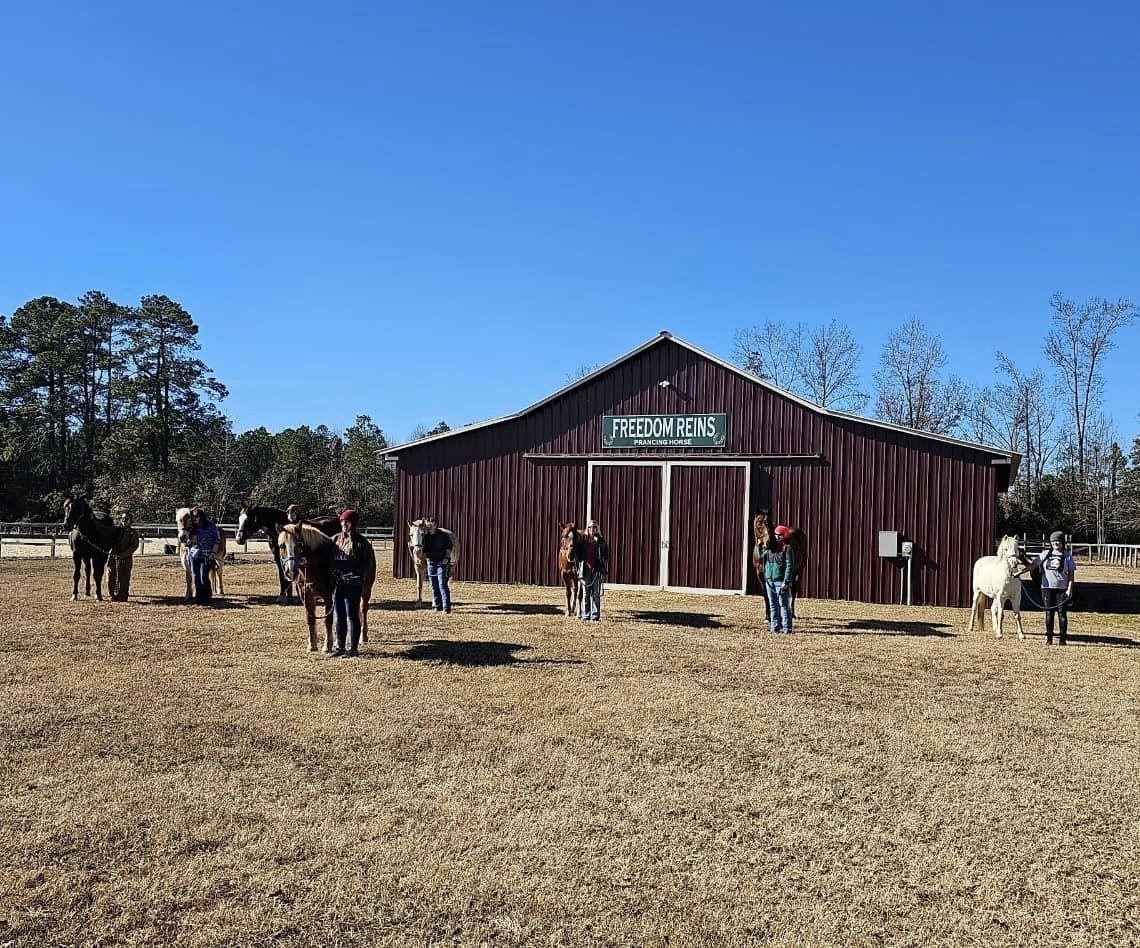
Are the organization's rules, restrictions and warnings (signage) conspicuously posted in easily accessible locations? Yes
Are the organization's emergency contacts, including veterinarian contact information, conspicuously posted in easily accessible locations? Yes
Are human and equine first aid kits easily accessible? Yes
Regarding all shelters where horses are housed including run-in sheds:
Do horses have assigned stalls in the barn/structure(s) or exclusively assigned shelter locations where they are separated from other horses with a barrier? No
How many hours per day, on average, are horses stalled or restricted to these sheltered exclusive shelter locations? 0-3;
How often are the stalls/shelters cleaned, i.e., kept in good repair and free of standing water, accumulated waste, sharp objects and debris? 6-7 Days a Week
Do all stalls/shelters allow horses to lie down, stand up and turn around and provide protection from inclement weather (wind, sleet, rain, snow and extreme temperatures)? Yes
Are stalls/shelters kept in good repair, with adequate ceiling height, and free of standing water, accumulated waste, sharp objects and debris? Yes
Are floors constructed and maintained for both good drainage and traction? Yes
Is there a ventilation and circulation system in place to allow free flow of air to control temperature, and humidity, and to prevent air stagnation? Yes
Is wiring inaccessible to horses and maintained for safety in all areas of facility? Yes
Are fire prevention/protection measures (fire alarms, extinguishers and sprinkler systems) maintained and in good working order? Yes
Is there adequate lighting to ensure safety in all areas of facility? Yes
How many hours per day, on average, are horses turned out:
Equines are out 24/7
Equines are out 24/7 except when they are used for the conduct of the organization's programs
The following describes the pastures at this facility:
A dedicated staff person(s) is responsible for pasture management
All pastures are fenced to prevent escape or injury
Electric fencing is used; electric wires or tape fence are visibly marked
Fencing checks, such as broken or missing planks, loose fence posts, exposed or loose nails, detached wires, etc., are done regularly
Pastures are rotated
Pastures have man-made protection for equines (i.e., shelters)
This facility does not have pastures where equines can graze on pasture grass
This facility has a written plan in place for pasture management, which includes guidelines for seeding, fertilizing, irrigation, mowing, dragging, harrowing, manure removal, removal of debris, the control of poisonous plants, and a schedule for cleaning
Barbed wire is used for fencing
Pastures have natural protection for equines (i.e., trees)
The following describes the turnout areas other than pastures at this facility:
This facility does not have turnout areas
This facility has a written plan in place for the maintenance of turnout areas, which includes a schedule for cleaning, manure removal, and dragging
A dedicated staff person(s) is responsible for the maintenance of turnout areas
All turnout areas are fenced to prevent escape or injury
Barbed wire is used for fencing
Electric fencing is used; electric wires or tape fence are visibly marked
Turnout areas have man-made protection for equines (i.e., shelters)
Fencing checks, such as broken or missing planks, loose fence posts, exposed or loose nails, detached wires, etc., are done regularly
The following policies and procedures are in place at the facility to restrict public access and to keep horses safe:
The property owner, staff member or caretaker lives on the premises and ensures that public access is restricted and is responsible for the security of the facility and equines
There is a practice in place to monitor equines overnight
No Trespassing signs are posted
Hold Harmless signs are posted
Authorized Personnel Only signs are posted
Entrance gates are locked at night
Visitors are only permitted at specific times
Visitors are only permitted in specific areas
The property is fitted with motion lights
The property is fitted with a security system monitored by police or a professional service
The property is fitted with a security system that is monitored internally by staff (or the property owner)
The perimeter of the property is fully fenced
A security guard is present at night
By Appointment Only signs are posted.
Equine Care/Emergency Preparedness: Prancing Horse Farm (*Main) 2025 and 2024 This section is required.
Horse Health Care/Barn Management Records: What system is used to collect and store health/horse care records?
Onsite computer with cloud-based backup storage system
Our organization utilizes a software application to maintain records
The following items are consistent with our feed management plan and practices:
Equines are provided with individualized feeding plans, including supplements, according to the equine's age, breed/type, condition, size, work level and any health issues, consisting of nutritious food provided in sufficient quantity and access to adequate natural forage, or be fed daily, or as recommended by the organization's veterinarian
Feed plans are determined in consultation with a veterinarian
Supplement plans are determined in consultation with a veterinarian
Equines are fed grain in groups
Staff and/or volunteers are trained in proper feed measurements and protocols and observed periodically to ensure they are feeding correctly
The feed chart is centrally located and updated as needed
The area(s) where hay, feed, grain, and supplements are stored are kept clean, free of debris and chemicals, and protected from weather and other animals in rodent-proof and mold-proof containers and grain bins
Feed, supplements and hay types are clearly labeled
Water sources, i.e., buckets, troughs, automatic waterers, etc. are kept clean, free of contaminants, debris and chemicals, protected from weather and other animals, and be positioned or affixed to minimize spillage.
Medications are kept in a secure area
Equines are fed grain in individual stalls
Is clean, potable water available at all times for all equines, or if not at all times, at least twice daily? Yes
Hoof Care: How often is hoof care provided for each equine? Every 4-8 weeks and when an issue arises
Dental Care: How often is dental care provided for each equine? Annually and when an issue arises
Horse checks: How often are equines visually and physically checked by personnel at the facility? Every day or 6 days a week
Our organization has the following parasite and fly/insect control protocols in place, including remedies used to control flies and insects:
Our organization follows the parasite control guidelines of our veterinarian, including fecal testing and de-worming
Fly/Insect Control Remedies:
Fly parasites
Fly Traps and Tapes
Fly Spray Repellent
Fly Masks
Fly Sheets
Fans
The following represent the biosecurity practices in place at facility:
Our organization follows the biosecurity guidelines of our veterinarian
Sick, affected and/or quarantined equines do not have contact with other equines or other animals
The organization has a written biosecurity plan
Staff are trained in best practices related to biosecurity
A specific individual is trained and assigned to care for sick, affected and/or quarantined equines
Sick, affected and/or quarantined equines are cared for last if the caretaker must also care for healthy equines
Restricted access signs are posted at primary points of access to sick, affected and/or quarantined equines
Hand sanitizers are available at all primary points of access to sick, affected and/or quarantined equines
Footbaths are available at all primary points of access to sick, affected and/or quarantined equines
Manure and bedding from sick, affected and/or quarantined equines is removed from the facility - not put in open air piles, and not spread on pastures
Quarantine areas, such as stalls, aisle ways, paddocks, and common areas, are cleaned (and needed, disinfected) after conclusion of the quarantine.
Trailers/vans used by sick, affected and/or quarantined equines are cleaned and disinfected after each use and cleaning takes place away from where equines are sheltered
Equipment used by sick, affected and/or quarantined equines is not shared
Equipment used by sick, affected and/or quarantined equines is cleaned of organic debris and disinfected after each use
Latex gloves, or equivalent gloves, are worn when working with sick, affected and/or quarantined equines
Volunteers are trained in best practices related to biosecurity
Equines are not quarantined on arrival.
The following represent the manure removal practices in place at facility:
Manure is piled in an area where equines are not located
Manure is hauled, sold or given away
Manure piles are composted or spread on pastures
Our organization adheres to the manure management guidelines set by the state, local authorities, and/or our organization's veterinarian
Manure is stored in dumpster(s)
Manure piles are covered
The following steps are taken to help staff and volunteers readily identify each horse on the property:
A notebook or binder with photos and information on each equine is easily accessible
Staff/volunteers are provided training on conformation, markings, colors, and breeds
Team leaders work with new staff/volunteers until they are able to identify the equines
Equines are assigned the same exclusive stall/shelter location each day
Name plates are located on the stall/shelter location
Photos are located on the stall/shelter location
Equines wear halters with nametags
A map/diagram is posted showing the location of each equine with equine names and photos
Equine photos and profiles are available on the website
Staff and volunteers are provided with an information packet with equine profiles, including photos and detailed descriptions
Our organization has the following policies and procedures in place pertaining to tack, apparel and equipment:
Saddles are shared
Saddle pads are shared
Blankets, sheets and turn out apparel are fitted and utilized for each equine appropriate to the equine's needs and the weather conditions
Blankets, sheets and turn out apparel are cleaned regularly as needed
Halters are shared
Tack is cleaned after each use
Tack is inspected for overall working condition before each use by trained personnel
Tack is assessed for fit before each use by trained personnel
Tack is assessed for fit by trained personnel when an equine's body condition changes
Tack is assessed for fit by trained personnel when an equine's disposition changes
This facility enlists the services of a professional saddle fitter at least once a year
Assigned tack is clearly labeled
Tack is stored in a climate-controlled location
Helmets are shared
Helmets are cleaned/disinfected after each use
Helmets are replaced after a fall
Helmets are replaced at least every five years.
All equines have specifically assigned tack, apparel and equipment that is not shared
Bridles are shared
Bits are shared
Blankets are shared
Sheets are shared
Turnout apparel is shared
Tack is cleaned weekly
Tack is cleaned only when needed
No equines are ridden; not applicable.
Emergency Preparedness: Prancing Horse Farm: *Main This section is required.
The following plans, policies, and procedures are in place at the facility to handle emergencies and address weather related issues, fire safety procedures, and/or any additional hazardous scenarios the facility could potentially experience:
Emergency procedures are posted prominently
Emergency phone numbers are posted prominently
The facility owns or has access to a generator
The facility maintains at least two weeks of hay, feed, shavings and medications
The facility collects and maintains medical information from staff, volunteers, and clients
The facility maintains appropriate liability and/or workers' compensation insurance
The organization has a written emergency preparedness/safety plan (EPP)
Local fire department and/or the state's emergency planning department procedures
Medical emergencies for clients, staff, and volunteers
Medical emergencies for equines
Evacuation plans
Power outages
Fire
Natural Disasters - thunderstorm, hurricanes, earthquakes, tornados, etc
Terrorist attacks
Protocols to notify emergency personnel
Building/facility exit plans
The facility follows the specific procedures to help PREVENT emergency situations:
Smoking is strictly prohibited
NO SMOKING signs are posted prominently
Hay is stored away from permanent or temporary structures where equines are stalled
Permanent or temporary structures where equines are stalled are kept free of dust, cobwebs, trash, cleaning rags, and other flammable items
Aisles and doorways are kept clear
Heaters with automatic shutoff settings are used
How often are the following checked or performed?
Fire Extinguishers are checked: Annually
Smoke detectors are checked: Semi-annually
Fence lines are checked: Daily
Turnout Areas are checked: Daily
Sprinkler systems are checked: Daily
Fire drills are conducted: Semi-annually
Review of safety protocols with staff are conducted: Semi-annually
Review of safety protocols with volunteers are conducted: Semi-annually
The Emergency Preparedness Plan is reviewed and updated: Semi-annually
Equine Transportation: 1= Onsite: 0 (0 + 0) + Offsite: 1
2-horse van/trailer with truck:
0 Owned onsite 0 Access onsite but not owned 1 Access offsite;
3-horse van/trailer with truck:
0 Owned onsite 0 Access onsite but not owned 0 Access offsite;
4-horse van/trailer with truck:
0 Owned onsite 0 Access onsite but not owned 0 Access offsite;
6-horse van/trailer with truck:
0 Owned onsite 0 Access onsite but not owned 0 Access offsite;
8-horse van/trailer with truck:
0 Owned onsite 0 Access onsite but not owned 0 Access offsite;
10-horse van/trailer with truck:
0 Owned onsite 0 Access onsite but not owned 0 Access offsite;
GOVERNANCE, MANAGEMENT & FINANCIAL REPORTING
Financial ReportingBudget: $100K to $500K
Equine Budget: $50K to $100K
Month Fiscal Year Ends: 12
Type of Financial Reporting (Audit, Review, Compilation): Review
Type of IRS Filing (990, 990-EZ, 990-N): 990
View the IRS Form 990/Pro Forma 990
Governing Body:
Board meetings per year: 12
Number of Board Members: 11 Number of Voting Board Members: 11
Board Compensation:
Is the Board Chair compensated? No Is the Treasurer compensated? No
Are there any other Voting Board Members that are compensated? No
Board/Staff Relationships:
Are any members of the Board, Staff or Program Participants related to each other through family or business relationships? No
Board/Staff Affiliations:
Are any Board members providing services to your organization or compensated by your organization, or are any Board members or staff members associated with and/or compensated by another organization with a relationship or business affiliation to your organization? No
Conflict of Interest:
Does your organization have a written conflict of interest policy that ensures that any compensated board member is a NON-VOTING (Independent) board member or that any compensated board member or any board member related to a compensated staff member, independent contractor, or any related board members, or any individual or organization that might benefit from a board decision, abstains from voting on issues impacting such compensation and requires officers, directors or trustees, and key employees to disclose at least annually in writing interests that could give rise to conflicts? Yes
Compliance:
Below is a list all local, state and federal licenses held by the organization, and/or accreditations or compliances with the published standards of an accrediting organization, if applicable: We are a Premier Accredited Center of the Professional Association of Therapeutic Horsemanship. We renew our membership each Fall.
Organization documents available on our website:
Most recent IRS Form 990
Bylaws
Organization documents available on request:
Most recent Financials
Most recent IRS Form 990
Most recent Annual Report
Equine Intake Guidelines
Adoption/Foster Agreement
Volunteer Handbook
Staff Handbook
Bylaws
Staff & Volunteers:
Chief Staff Officer (CSO): Nicole Pioli, Executive Director
Employees/Independent Contractors: Full-Time: 4 Part-Time: 2 Volunteers: 100
Staff Recruitment, Screening and Training processes including employees and independent contractors:
Prospective staff/independent contractors complete a written application/agreement
Our organization has a practice in place to ensure that the organization has sufficient knowledge of the background of prospective staff and independent contractors that may impact the safety of your clients and your horses, such as whether prospective staff/independent contractors serving in the capacity as staff have been convicted of a sexual offense or convicted for animal cruelty or neglect. Such practices must comply with local, state, and federal mandates.
Staff and/or contractors are required to complete a Liability Release/Hold Harmless Agreement
Staff and/or contractors are required to provide Emergency Medical Information
Staff and/or contractors are required to sign a Photo Release
Prospective staff/independent contractors are required to undergo a Background Check
Staff and/or contractors provide parent/guardian information if applicable
Staff and/or contractors carry current health insurance
Staff and/or contractors have a written job description
Staff and/or contractors are evaluated on an annual and as needed basis or with any change in their job description
Staff and/or contractors are updated on all the organization's policies and procedures on an annual and as needed basis or with any change in policy or procedure
Staff and/or contractors receive training that includes safety guidelines, confidentiality, equine handling, equine identification, and emergency procedures; additional training is job specific
Staff and/or contractors have a supervisor and is responsible for keeping their supervisor up to date on work related activities
The organization provides a handbook ((available either online or in print) to every member of the staff, including employees and/or independent contractors serving in staff positions;
The handbook includes information, such as hours of work, vacation, sick leave, dress code, cell phone usage, and the protocol for dismissal
The handbook is reviewed annually and updated
One or more staff members or contractors are trained in CPR and human first aid
One or more staff members or contractors are trained in equine first aid
Staff and/or contractors are subject to Random Drug Screening
Volunteer Recruitment, Screening and Training processes:
Prospective volunteers complete a written application/agreement
Our organization has a practice in place to ensure that the organization has sufficient knowledge of the background of prospective volunteers that may impact the safety of your clients and your horses, such as whether prospective volunteers have been convicted of a sexual offense or convicted for animal cruelty or neglect. Such practices must comply with local, state, and federal mandates.
Volunteers required to complete a Liability Release/Hold Harmless Agreement
Volunteers are required to provide Emergency Medical Information
Volunteers are required to sign a Photo Release
Prospective volunteers are required to undergo a Background Check
Volunteers provide parent/guardian information if applicable
Volunteers carry current health insurance
Volunteers have written job descriptions
Volunteers are evaluated on an annual and as needed basis or with any change in their job description
Volunteers are updated on all the organization's policies and procedures on an annual and as needed basis or with any change in policy or procedure
Volunteers receive training that includes safety guidelines, confidentiality, equine handling, equine identification, and emergency procedures; additional training is job specific
Volunteers are assigned a supervisor (staff member and/or senior volunteer) and is responsible for keeping their supervisor up to date on work related activities
The supervisor assesses the volunteer's abilities and assigns specific duties to the volunteer based on their skills
The organization records and maintains written attendance information and hours on every volunteer
The organization provides a Volunteer Handbook to every volunteer
The Volunteer Handbook (available either online or in print) includes volunteer-related information, such as hours of work, dress code, cell phone usage, and the protocol for dismissal
The Volunteer Handbook is reviewed annually and updated
The organization holds regular orientation sessions for volunteers and prospective volunteers that includes an overview of the organization, its mission, activities, volunteer responsibilities and expectations, safety guidelines, and a tour of the facility
Volunteers are subject to Random Drug Screening
Additional explanation regarding governance, staffing and volunteer practices or further explanation of the answers above.
Employees sign a copy of their job description as part of the employment agreement as well as a liability waiver, confidentiality policy/pledge, acknowledgement of employee handbook, emergency contact information, and staff and wellness policies. Independent contractors are not asked to sign an employment agreement but must complete an employment application, liability waiver, emergency contact information, and all appropriate state/federal tax documentation. Each staff person receives a copy of the Prancing Horse employee handbook, a copy of the job description/requirements, and a copy of the organization's code of conduct.
© Copyright 2018 EQUUS Foundation 1283 transparency 5.00 Yes
